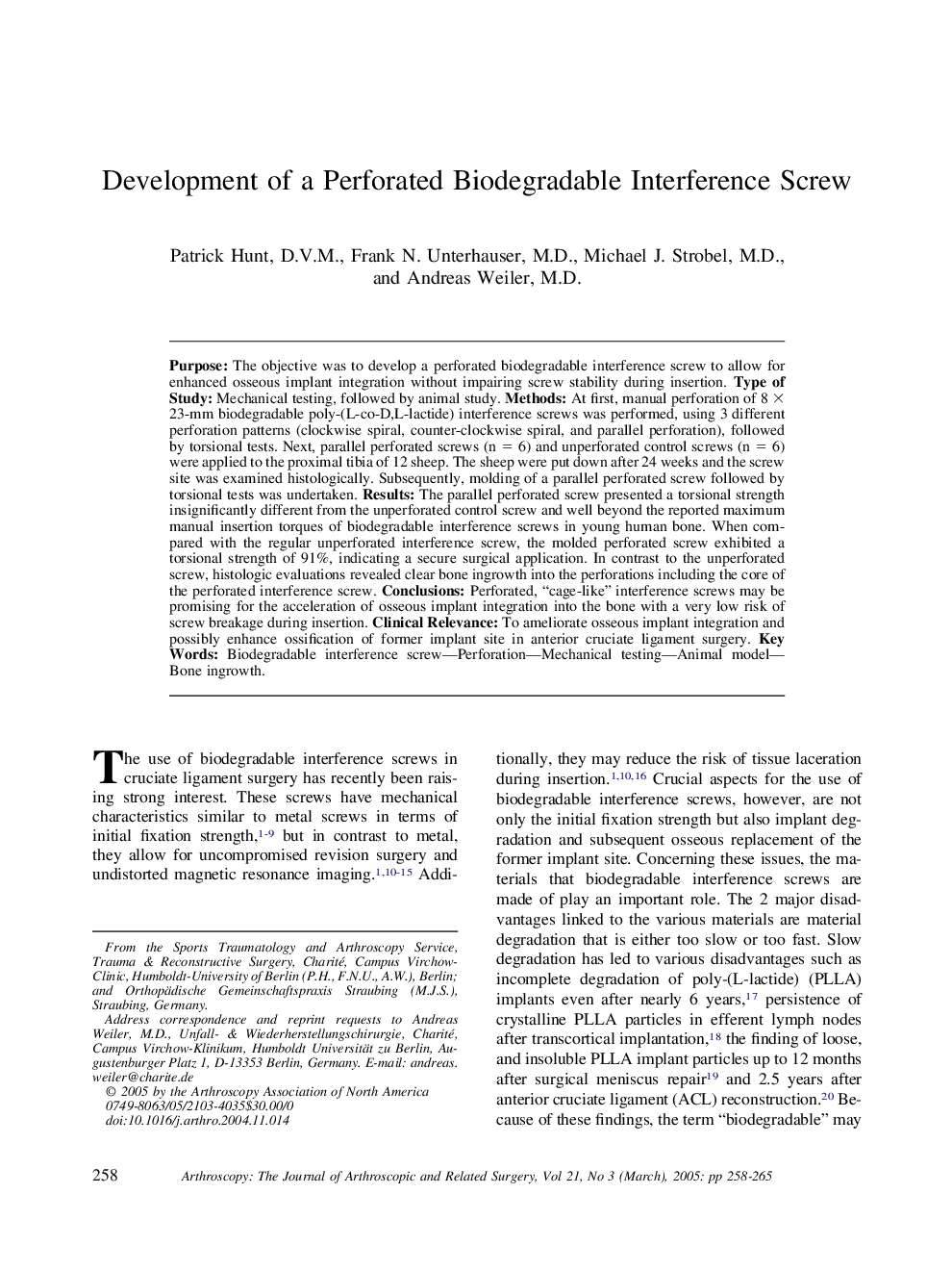| Article ID | Journal | Published Year | Pages | File Type |
|---|---|---|---|---|
| 10079195 | Arthroscopy: The Journal of Arthroscopic & Related Surgery | 2005 | 8 Pages |
Abstract
Purpose: The objective was to develop a perforated biodegradable interference screw to allow for enhanced osseous implant integration without impairing screw stability during insertion. Type of Study: Mechanical testing, followed by animal study. Methods: At first, manual perforation of 8 Ã 23-mm biodegradable poly-(L-co-D,L-lactide) interference screws was performed, using 3 different perforation patterns (clockwise spiral, counter-clockwise spiral, and parallel perforation), followed by torsional tests. Next, parallel perforated screws (n = 6) and unperforated control screws (n = 6) were applied to the proximal tibia of 12 sheep. The sheep were put down after 24 weeks and the screw site was examined histologically. Subsequently, molding of a parallel perforated screw followed by torsional tests was undertaken. Results: The parallel perforated screw presented a torsional strength insignificantly different from the unperforated control screw and well beyond the reported maximum manual insertion torques of biodegradable interference screws in young human bone. When compared with the regular unperforated interference screw, the molded perforated screw exhibited a torsional strength of 91%, indicating a secure surgical application. In contrast to the unperforated screw, histologic evaluations revealed clear bone ingrowth into the perforations including the core of the perforated interference screw. Conclusions: Perforated, “cage-like” interference screws may be promising for the acceleration of osseous implant integration into the bone with a very low risk of screw breakage during insertion. Clinical Relevance: To ameliorate osseous implant integration and possibly enhance ossification of former implant site in anterior cruciate ligament surgery.
Related Topics
Health Sciences
Medicine and Dentistry
Orthopedics, Sports Medicine and Rehabilitation
Authors
Patrick D.V.M., Frank N. M.D., Michael J. M.D.,, Andreas M.D.,
